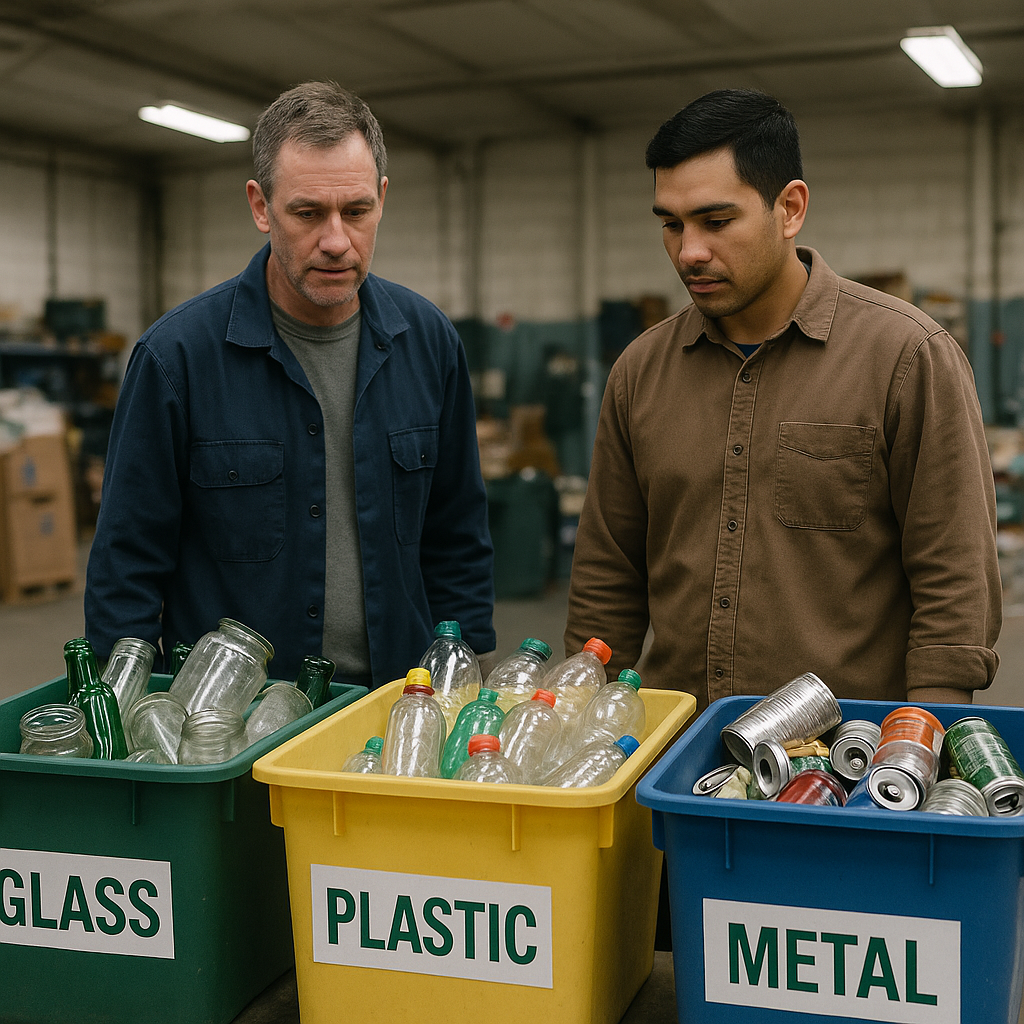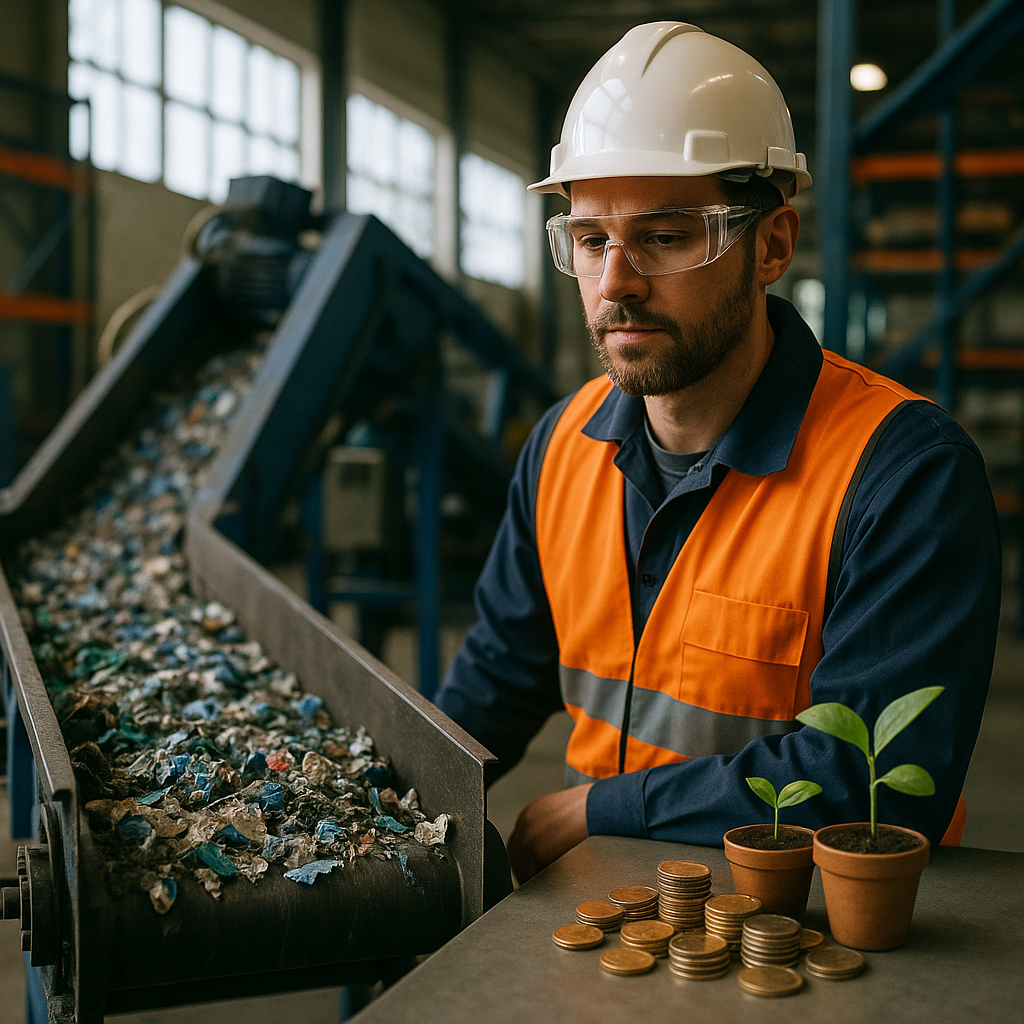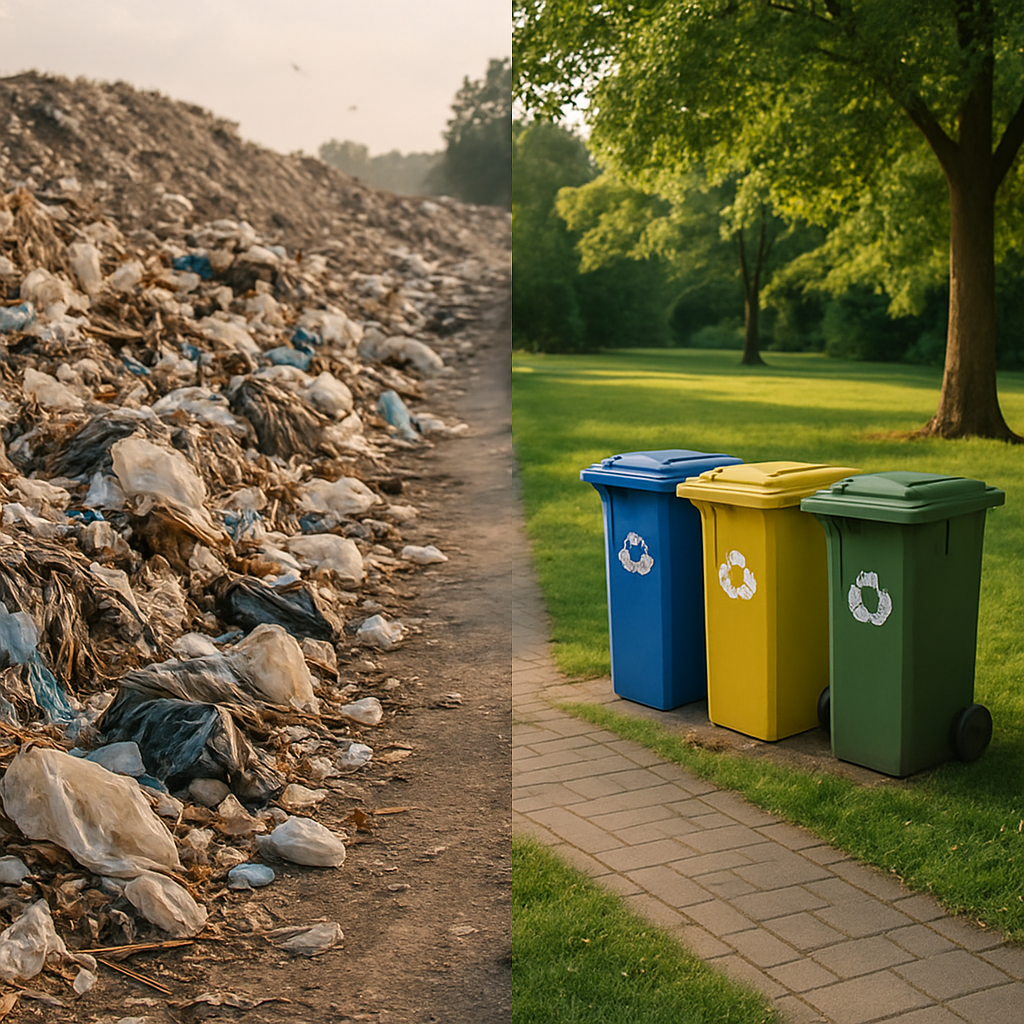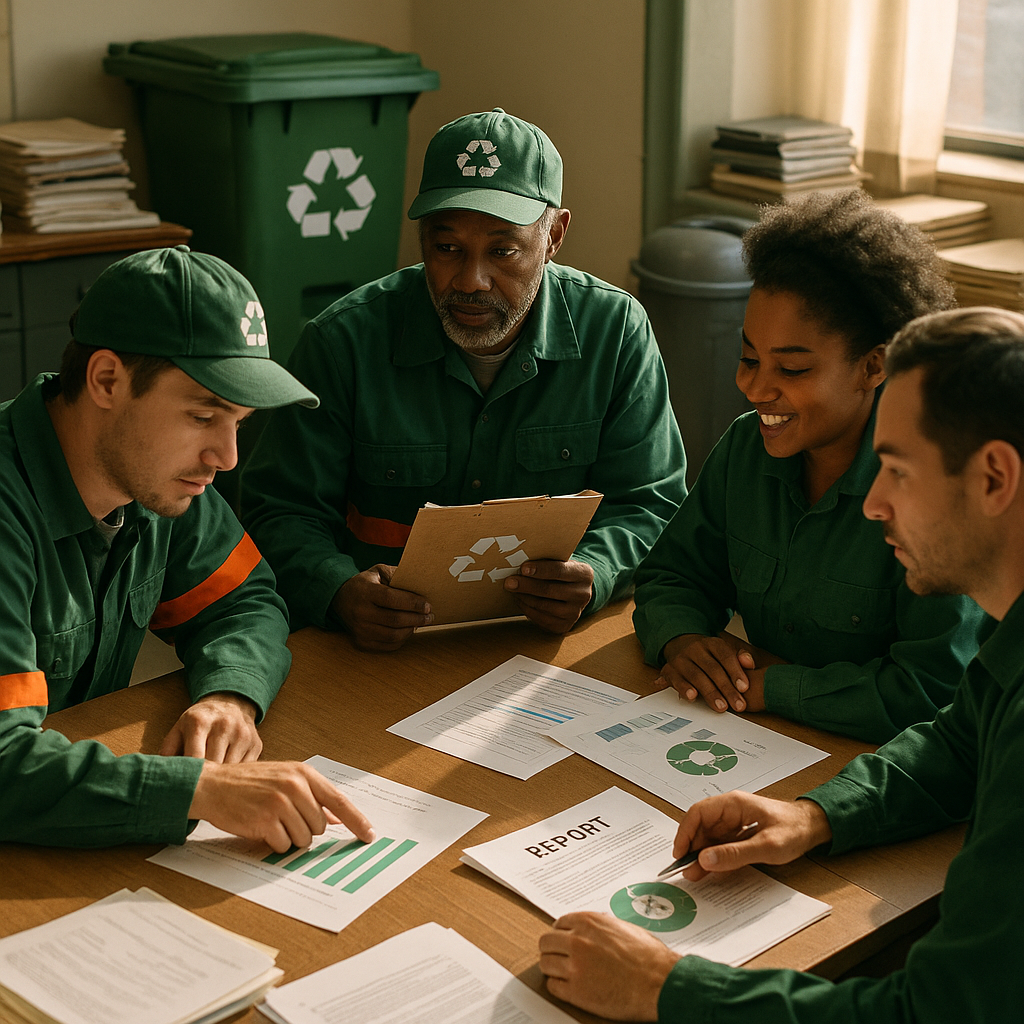5901 Botham Jean Blvd, Dallas, TX 75215
Is It Cheaper to Recycle or Throw Away? Exploring the Costs
July 20, 2025When we toss something in the trash, where does it really go? More importantly, what is the true cost of that decision? These questions lie at the heart of today’s waste management debates.
Recycling is typically more expensive than simply discarding materials. The numbers highlight this clearly. In San Jose, California, landfilling waste costs about $28 per ton, while recycling costs $147 per ton. In New York City, recycling costs $200 more per ton than sending waste to landfills.
Several factors contribute to these higher recycling costs. Recycling programs require specialized trucks and additional employees to collect and sort materials. Cities must fund ongoing public education campaigns to inform residents about what can and cannot be recycled. Purchasing and distributing recycling containers add another layer of expense. The 2018 implementation of China’s National Sword Policy, which halted the import of most recyclable materials, further complicated the economics by causing scrap material prices to plummet.
How do recycling costs vary by material?

The economics of recycling vary significantly depending on the material being processed. While some materials can be profitable, others may operate at a loss, despite their environmental advantages. Understanding these differences helps municipalities and businesses make informed waste management decisions.
Aluminum: The Recycling Champion
Aluminum is the leader in cost-effective recycling. It requires approximately 95% less energy to recycle than to produce new aluminum from raw bauxite ore. This significant energy savings makes aluminum recycling highly profitable.
The recycling process for aluminum is straightforward and efficient. Collection systems actively pay for aluminum cans, reflecting their high market value. The material can be recycled indefinitely without quality degradation, making it an ideal fit for the circular economy.
Steel: Efficient and In Demand
Steel recycling is remarkably efficient, saving up to 74% of the energy compared to using virgin materials. The metal can be recycled repeatedly without losing quality. Even low-quality steel scrap can be converted into high-quality steel through modern techniques.
There is more demand for recycled steel than supply, favoring steel recycling programs economically. The straightforward sorting process also reduces processing costs compared to more complex materials.
Glass: Infinitely Recyclable but Logistically Challenging
Glass is entirely recyclable and can be processed endlessly without degradation. However, the energy savings are modest at about 21% compared to virgin material production.
Despite its benefits, glass recycling faces logistical hurdles in the United States. The national recycling rate for glass is around 33%, burdened by collection and transportation costs. Its heavy and breakable nature makes collection more expensive than for lighter materials.
Plastic: The Problematic Material
Recycling plastic often isn’t cost-effective. Under current market conditions, producing virgin plastic is cheaper than recycling. The low scrap value and high processing costs create unfavorable economics.
Another challenge is quality degradation; most plastics can only be recycled 2-3 times before they become unusable. Different plastic types require separate processing streams, further increasing costs.
Paper: Energy Efficient but Costly
Recycling paper is generally more costly than producing virgin paper, but it uses significantly less energy. Paper fibers become shorter with each recycling cycle, limiting recyclability to about six times before they become unusable.
The market for recycled paper can fluctuate significantly. Processing involves removing inks, adhesives, and other contaminants, requiring substantial water and chemicals, making the process expensive.
| Material | Energy Savings | Recycling Costs vs. Virgin Production | Recyclability |
| Aluminum | 95% | Highly profitable | Indefinitely recyclable without quality loss |
| Steel | 74% | Profitable with high demand | Can be recycled repeatedly without quality loss |
| Glass | 21% | Logistically challenging due to transportation costs | 100% recyclable without degradation |
| Plastic | Costly to recycle | Not cost-effective due to low scrap value and high processing costs | Recycled 2-3 times before losing usability |
| Paper | Energy-efficient | More costly than virgin production | Recyclable up to six times before fibers become unusable |
Factors Affecting Recycling Costs
Several key factors influence recycling economics for all materials. Collection systems represent a major cost component. Single-stream recycling (all materials in one bin) boosts consumer participation but leads to higher contamination and sorting costs.
Transportation distances greatly affect costs, especially for heavy materials. Investments in processing technology require substantial capital but can improve efficiency and material recovery rates.
Market demand for recycled materials fluctuates with global economic conditions. For example, lower oil prices make virgin plastic cheaper to produce. Additionally, China’s National Sword Policy in 2018 significantly altered global recycling economics by limiting scrap material imports.
Despite cost challenges for some materials, recycling programs contribute to economic activity and employment. The U.S. Environmental Protection Agency reports that recycling and reuse activities account for 681,000 jobs and $37.8 billion in wages nationwide.
What are the hidden economic benefits of recycling?

Recycling is often praised for its environmental benefits, but it also brings significant economic advantages that are frequently overlooked. These benefits go beyond mere cost savings, substantially contributing to economic growth and stability.
Job Creation Engine
Recycling is a powerful driver of job creation. According to the EPA, recycling and reuse in the United States generate about 681,000 jobs, $37.8 billion in wages, and $5.5 billion in tax revenues each year. This is a considerable economic force that deserves more recognition.
Recycling significantly outpaces traditional waste disposal in job creation. Studies by the environmental alliance GAIA indicate that recycling can generate up to 70 times more jobs than landfilling or incineration. Every stage of the recycling process—collection, processing, manufacturing, and sales of recycled products—creates employment opportunities absent in a linear waste model.
In New Jersey, for instance, about 27,000 people are employed in the recycling industry, highlighting its role as a major regional employer. These jobs cover a range of skill levels, offering opportunities across diverse workforce segments.
Business Cost Reduction
Businesses that implement recycling programs often achieve substantial cost savings by avoiding waste disposal expenses, especially in areas with high landfill tipping fees. By diverting materials from landfills, companies reduce disposal costs and can potentially earn revenue from selling recyclable materials.
Research shows that UK businesses could save approximately £23 billion annually through efficient resource use and recycling. Reducing waste means smaller dumpsters and less frequent collections, leading to immediate operational savings. Manufacturers using recycled materials also benefit from energy savings—for example, recycling aluminum uses 95% less energy than producing new aluminum.
Resource Value Retention
Recycling keeps valuable materials in circulation, preventing them from being lost in landfills. Retaining resource value mitigates dependence on fluctuating raw material prices, contributing to economic resilience for communities and businesses alike.
Aluminum, steel, and certain plastics maintain substantial economic value through recycling. With global demand for recycled steel outstripping supply, the market benefits local economies. Even when scrap values drop, the established recycling infrastructure continues to deliver economic advantages.
Innovation Driver
The recycling industry spurs innovation across sectors. Companies facing recycling challenges often develop new technologies and processes to enhance material recovery. This innovation extends beyond waste management to manufacturing, where businesses redesign products to include recycled materials or enhance recyclability.
These innovations create new market opportunities and intellectual property, strengthening economic competitiveness. By exploring alternatives to virgin materials, product developers often find more cost-effective or higher-performing solutions. The circular economy encourages cross-industry collaboration, fostering business models not viable in a traditional linear economy.
| Material | Energy Savings | Challenges | Market Demand |
|---|---|---|---|
| Aluminum | ~95% | Highly profitable, infinite recyclability, collection systems pay for cans | High |
| Steel | Up to 74% | Good efficiency, excess demand over supply | High |
| Glass | 21% | Logistical challenges, heavy and breakable | Moderate |
| Plastic | Low | High processing costs, degrades quickly | Low |
| Paper | Significant | Requires water and chemicals to remove contaminants | Fluctuates |
Local Economic Resilience
Effective recycling programs retain resources and economic activity locally rather than exporting waste. This localization strengthens financial resilience, particularly during global waste market disruptions, such as China’s National Sword policy in 2018.
Local recycling operations generate tax revenue to support community infrastructure. As the recycling industry grows, municipalities benefit from reduced waste management costs through economies of scale. For example, South Brunswick Township in New Jersey found recycling to be 60% more cost-effective than waste disposal per ton, highlighting fiscal benefits for local governments.
Long-term Economic Sustainability
The most significant hidden economic benefit of recycling may be its contribution to long-term sustainability. By reducing environmental externalities—costs borne by society through pollution, resource depletion, and climate effects—recycling offers real economic value that may not be immediately visible on balance sheets.
The recycling industry enhances economic stability by providing diverse employment opportunities less susceptible to automation or outsourcing. As global resource constraints intensify, communities with established recycling infrastructures will enjoy competitive advantages from reduced reliance on virgin materials and increased resource security.
How do environmental factors influence the recycling vs. throwing away debate?

Environmental considerations are central to the recycling versus landfill debate. While recycling operations require initial investment and infrastructure, their long-term environmental benefits are significant, extending far beyond simple waste reduction.
Recycling significantly reduces greenhouse gas emissions compared to traditional disposal methods. When materials decompose in landfills, they release methane—a greenhouse gas 25 times more potent than carbon dioxide. According to EPA data, recycling and composting saved over 193 million metric tons of carbon dioxide equivalent in 2018 alone.
Resource conservation represents another critical environmental advantage. Recycling aluminum uses 95% less energy than producing it from raw bauxite ore. Steel recycling saves 60% in production energy while using 40% less water and creating 97% less mining waste compared to virgin ore extraction. These resource savings directly translate to reduced environmental degradation.
Natural ecosystems benefit tremendously when we choose recycling over disposal. By reducing the demand for virgin materials, recycling helps preserve forests, watersheds, and mineral deposits that would otherwise be exploited. This conservation approach helps protect biodiversity and maintain natural carbon sinks like forests.
The pollution prevention aspect of recycling is significant. Landfills risk contaminating soil and groundwater with toxic substances found in waste. By diverting materials through recycling, we reduce this contamination threat while extending the operational lifespan of existing landfills.
Energy conservation is another environmental benefit. Manufacturing products from recycled materials typically requires significantly less energy than creating them from raw resources. For example, recycling just ten plastic bottles saves enough energy to power a laptop for more than 25 hours.
While financial considerations often drive waste management decisions, the environmental impacts offer a different value proposition. The environmental benefits of recycling—reduced emissions, conservation of resources, pollution prevention, and energy savings—provide compelling reasons to invest in recycling infrastructure despite potentially higher short-term costs.
The environmental case for recycling grows stronger when considering the cumulative impact of these benefits over time. As climate concerns intensify and natural resources become scarcer, the environmental advantages of recycling will likely become even more valuable to communities and businesses seeking sustainable waste solutions.
| Material | Recycling Energy Savings | Economic Impact | Environmental Impact |
|---|---|---|---|
| Aluminum | 95% energy savings | Highly profitable; high market value; can be recycled indefinitely | Conserves raw bauxite and reduces pollution |
| Steel | 74% energy savings | High demand for recycled steel; simple sorting reduces costs | Reduces mining waste and water usage |
| Glass | 21% energy savings | Challenging logistics; heavy and breakable | Reduces landfill use; 100% recyclable |
| Plastic | Varies significantly | Low scrap value; costly to recycle | Reduces oil usage; can prevent pollution if properly recycled |
| Paper | Significant energy savings | Difficult due to processing costs | Conserves forests and reduces water pollution |
Conclusion: Balancing costs and benefits in waste management

The economics of waste management involve balancing short-term expenses with long-term benefits. Recycling often requires a higher initial investment compared to landfill disposal but offers enduring environmental and economic advantages. Our analysis shows that cost-effectiveness varies by material type. Metals like aluminum and steel offer the most favorable recycling economics, reducing energy consumption by up to 95% compared to using virgin materials. Plastics present greater challenges due to fluctuating oil prices and degradation after multiple recycling cycles, affecting their economic viability.
The true value of recycling extends beyond direct financial calculations. Considering the broader picture—reduced greenhouse gas emissions, conservation of natural resources, and creation of green jobs—recycling is a valuable investment in our collective future. Businesses and municipalities evaluating waste management options should adopt a strategic approach: prioritize waste reduction first, followed by selective recycling of high-value materials for the most sustainable solution. For expert guidance on implementing cost-effective recycling strategies for your organization, contact Okon Recycling at 214-717-4083.
